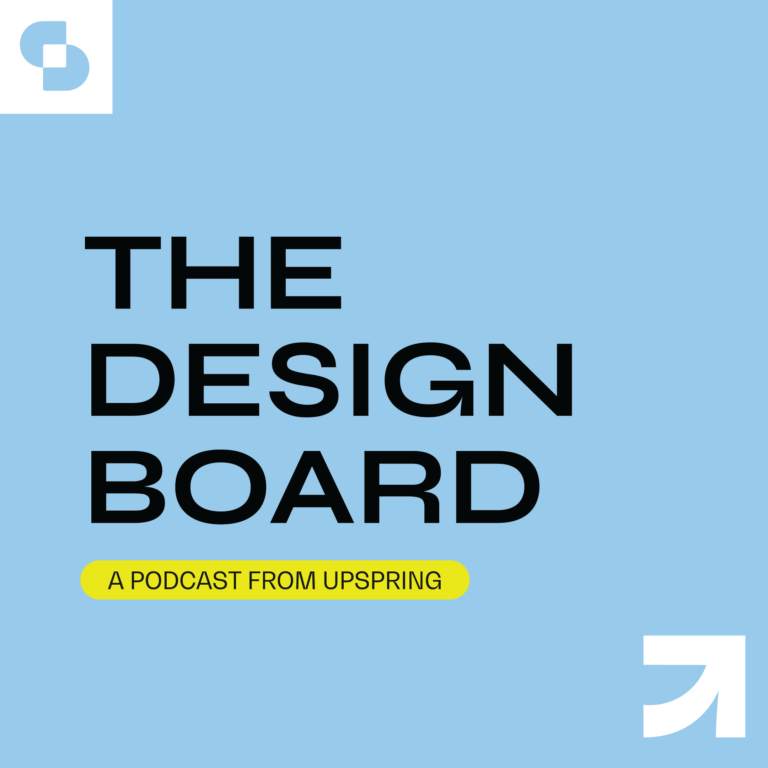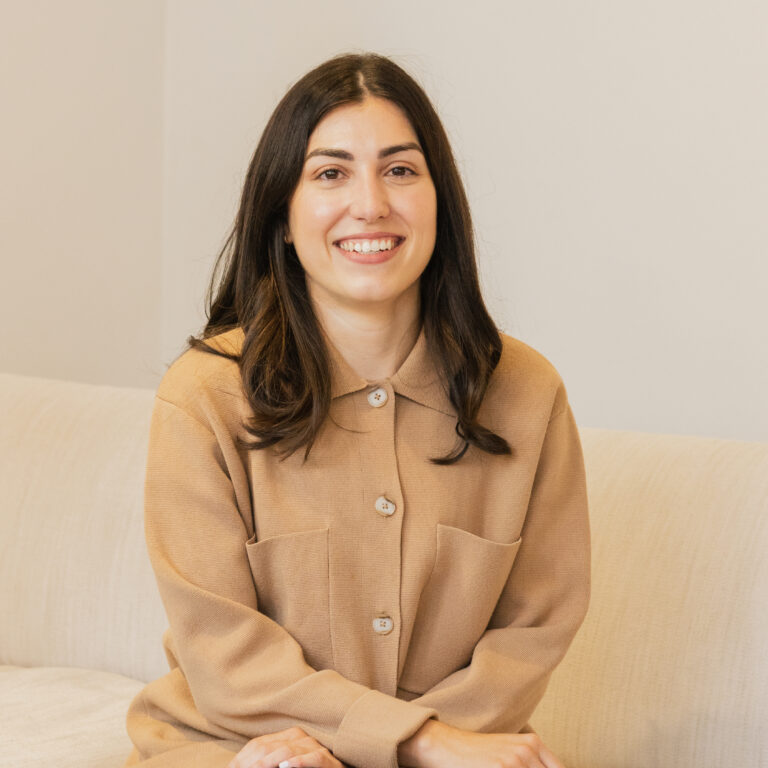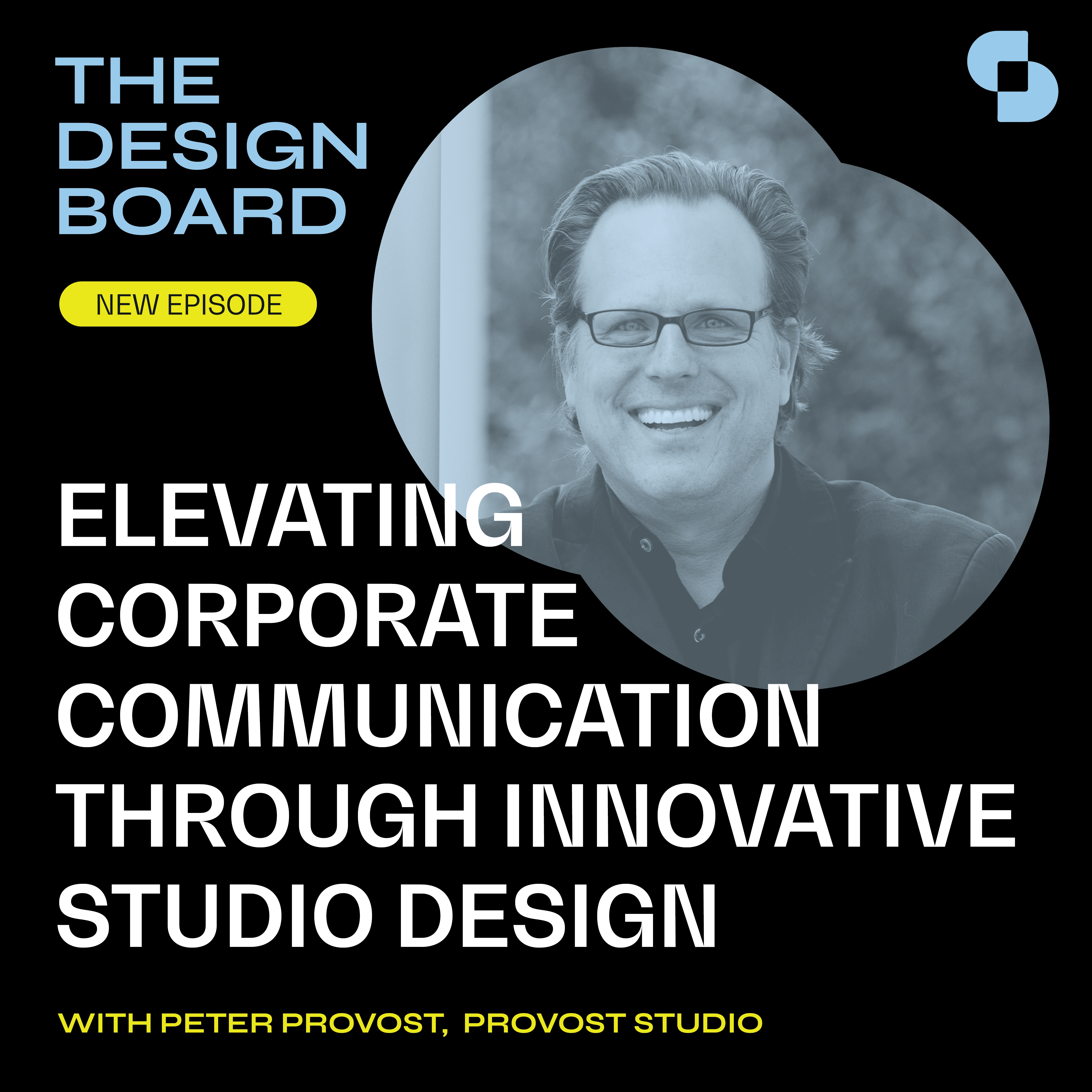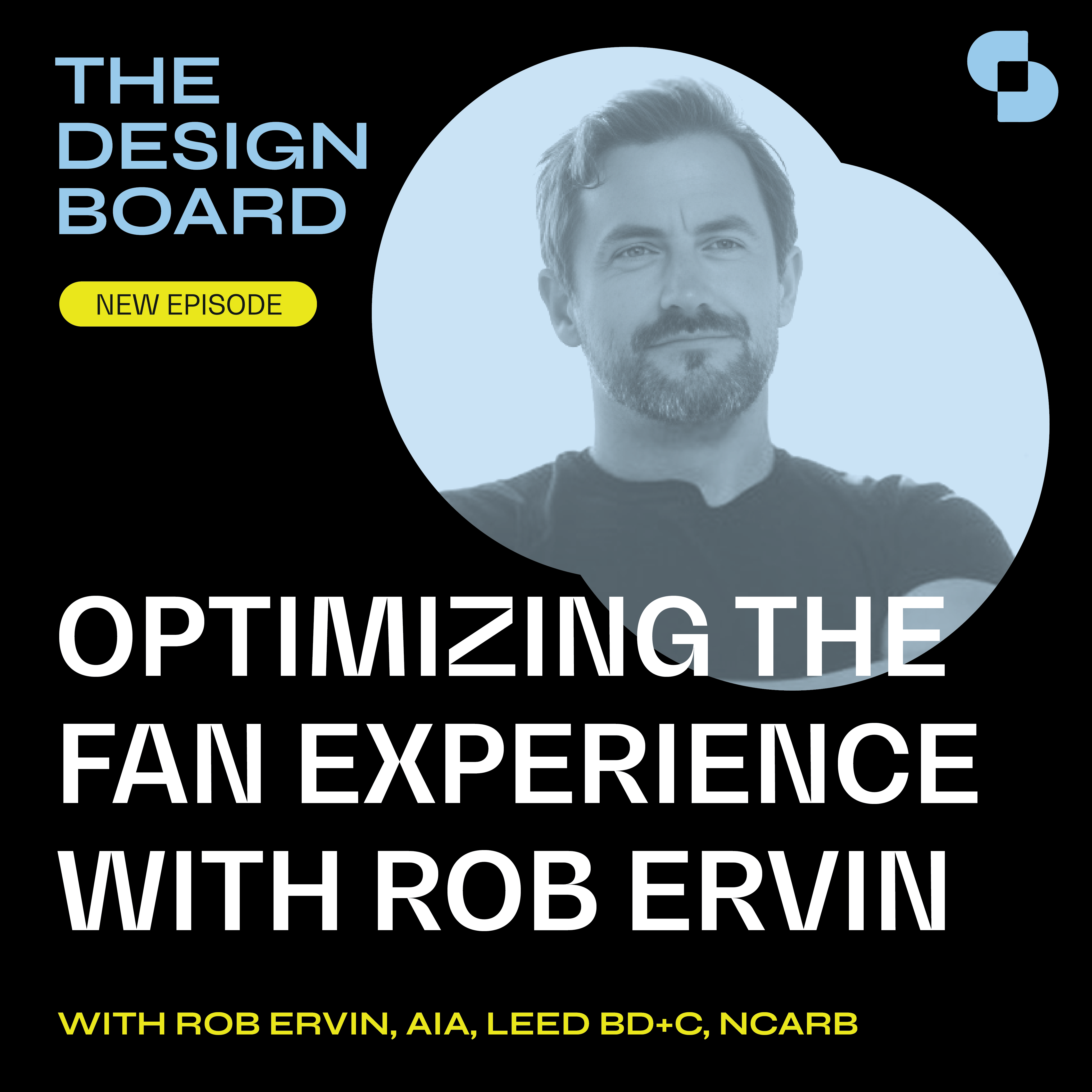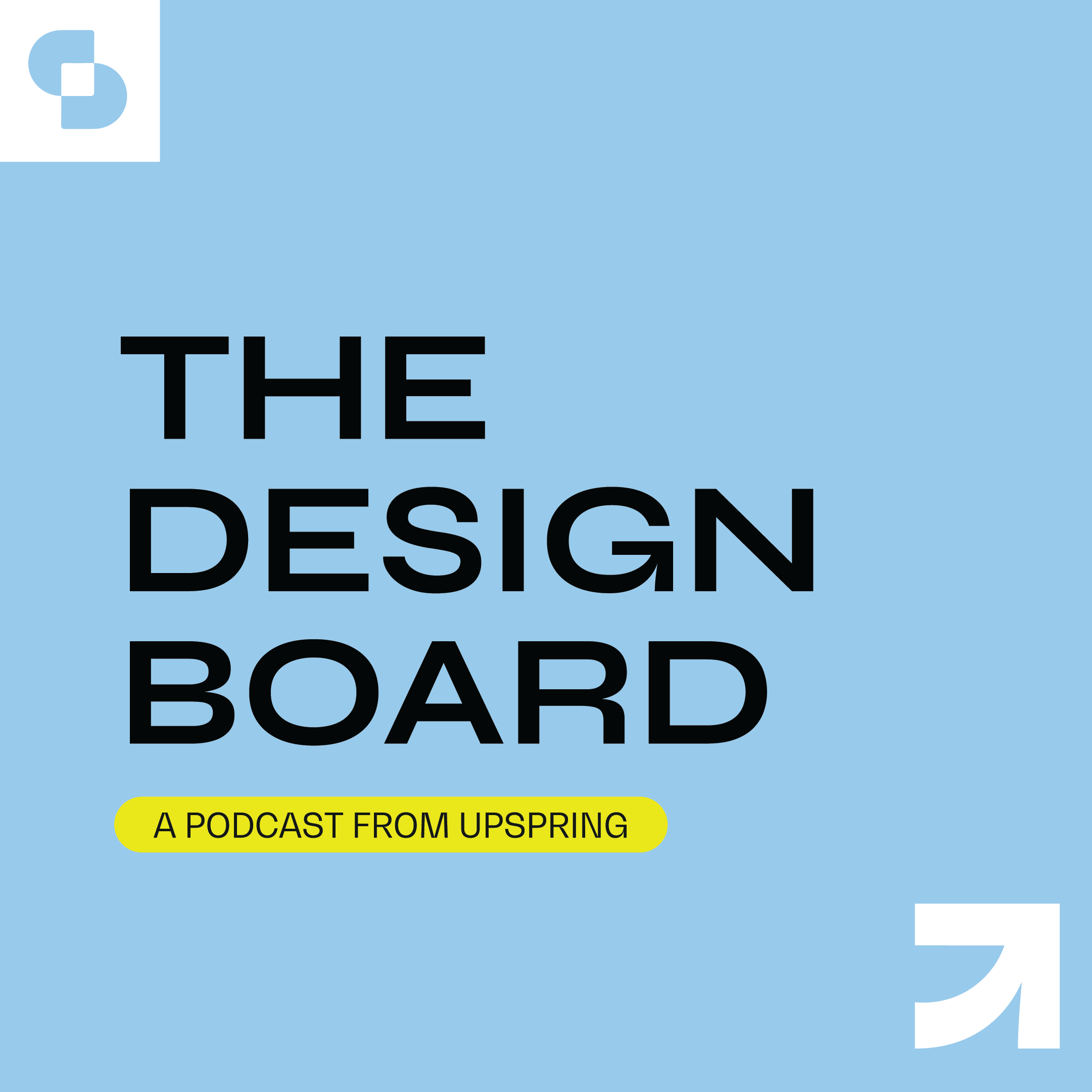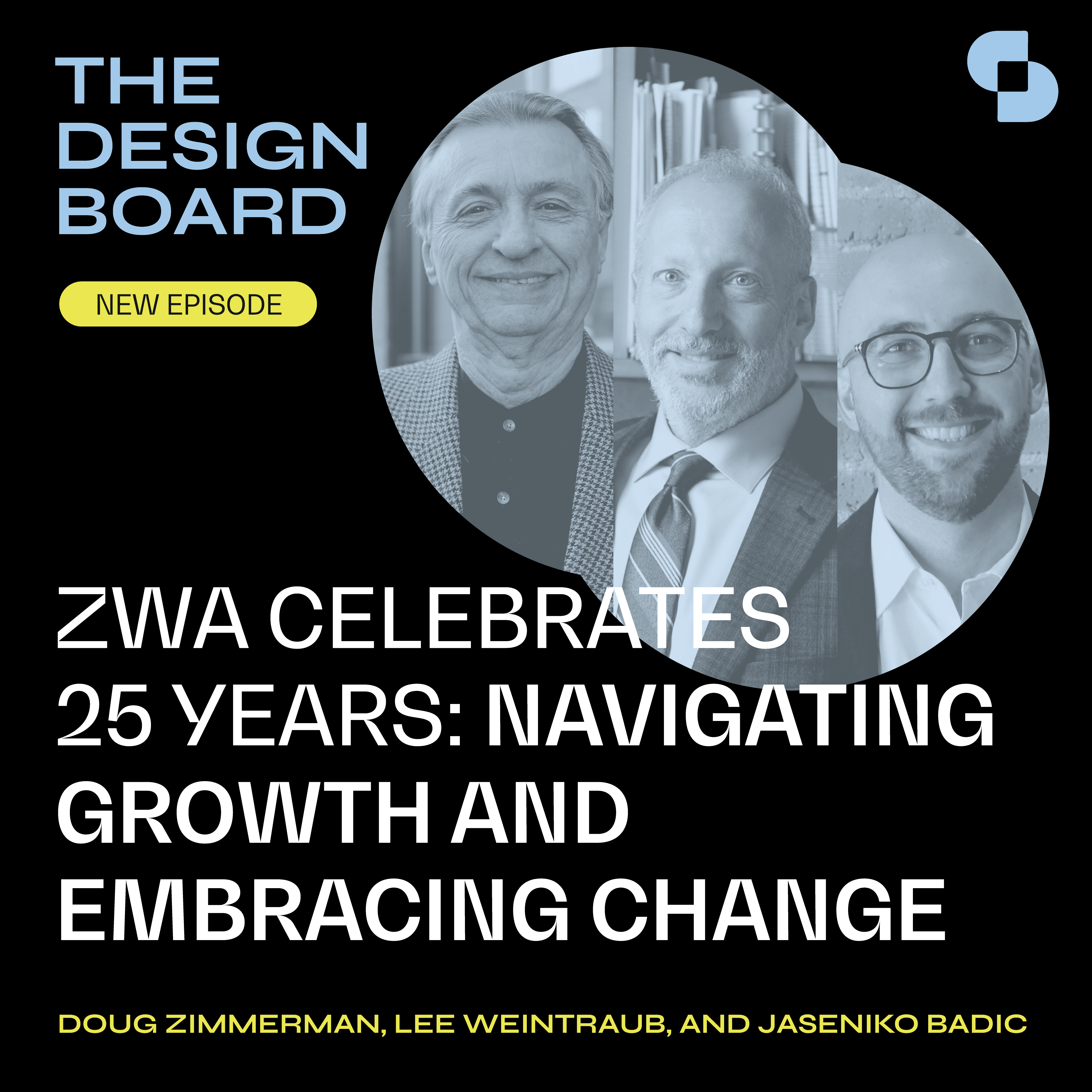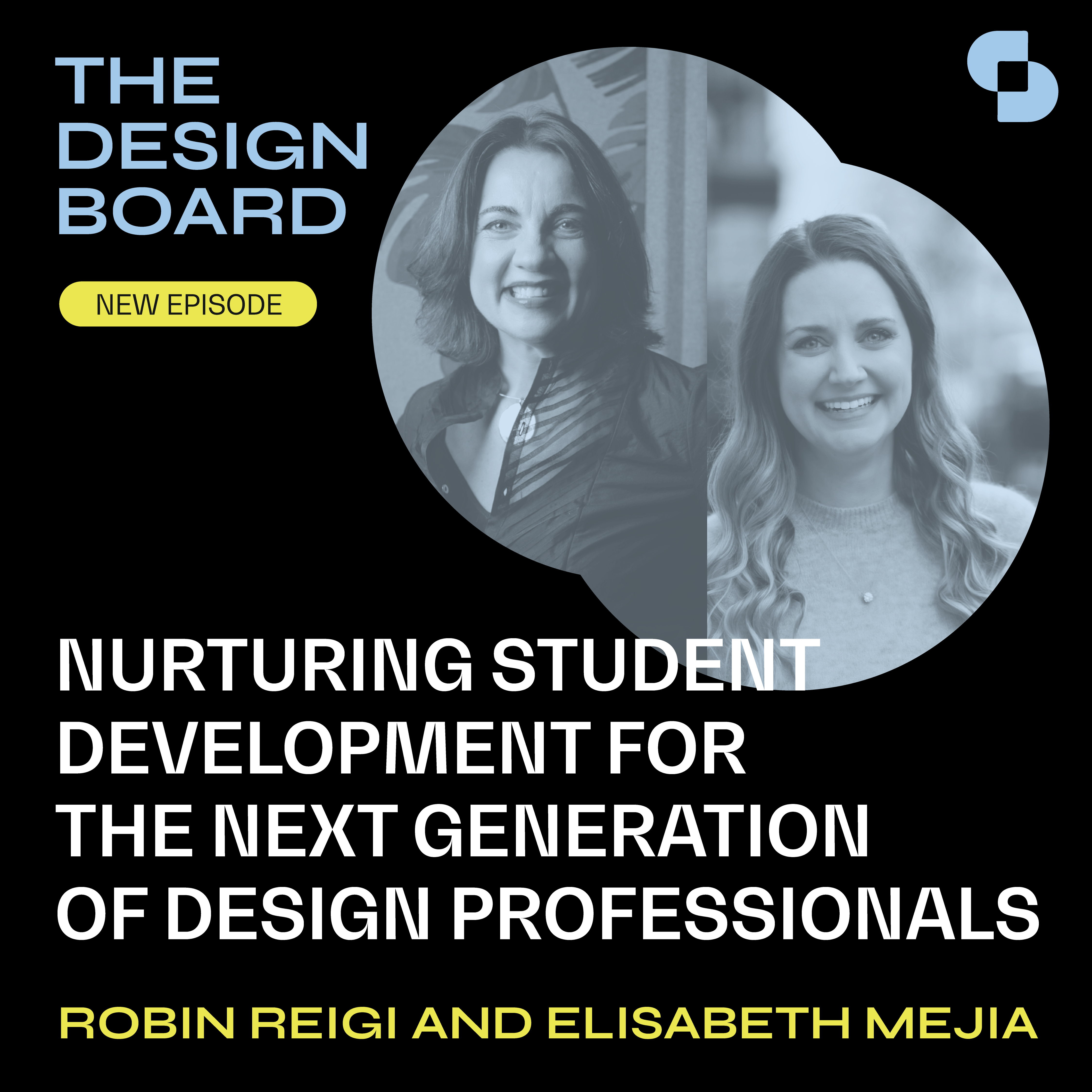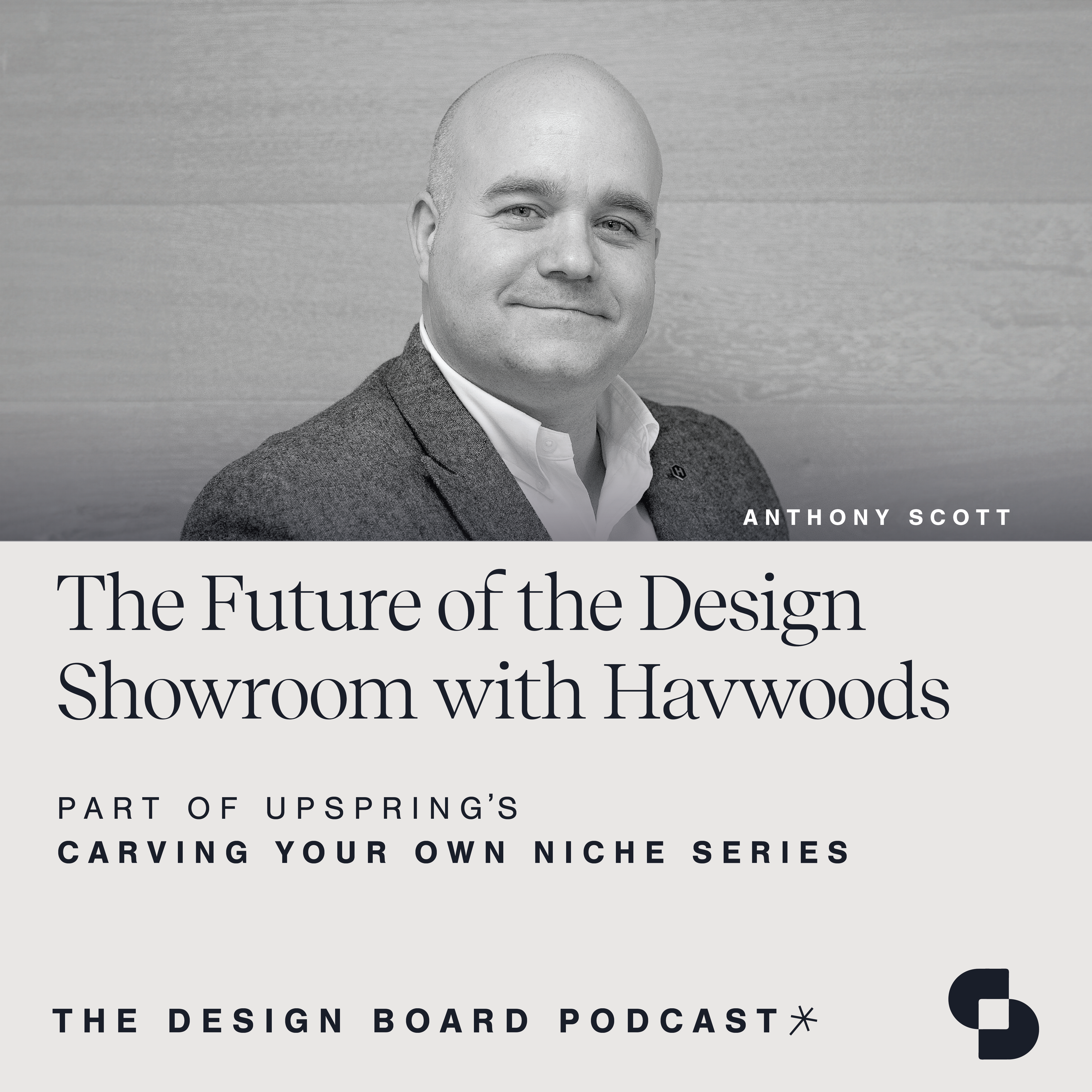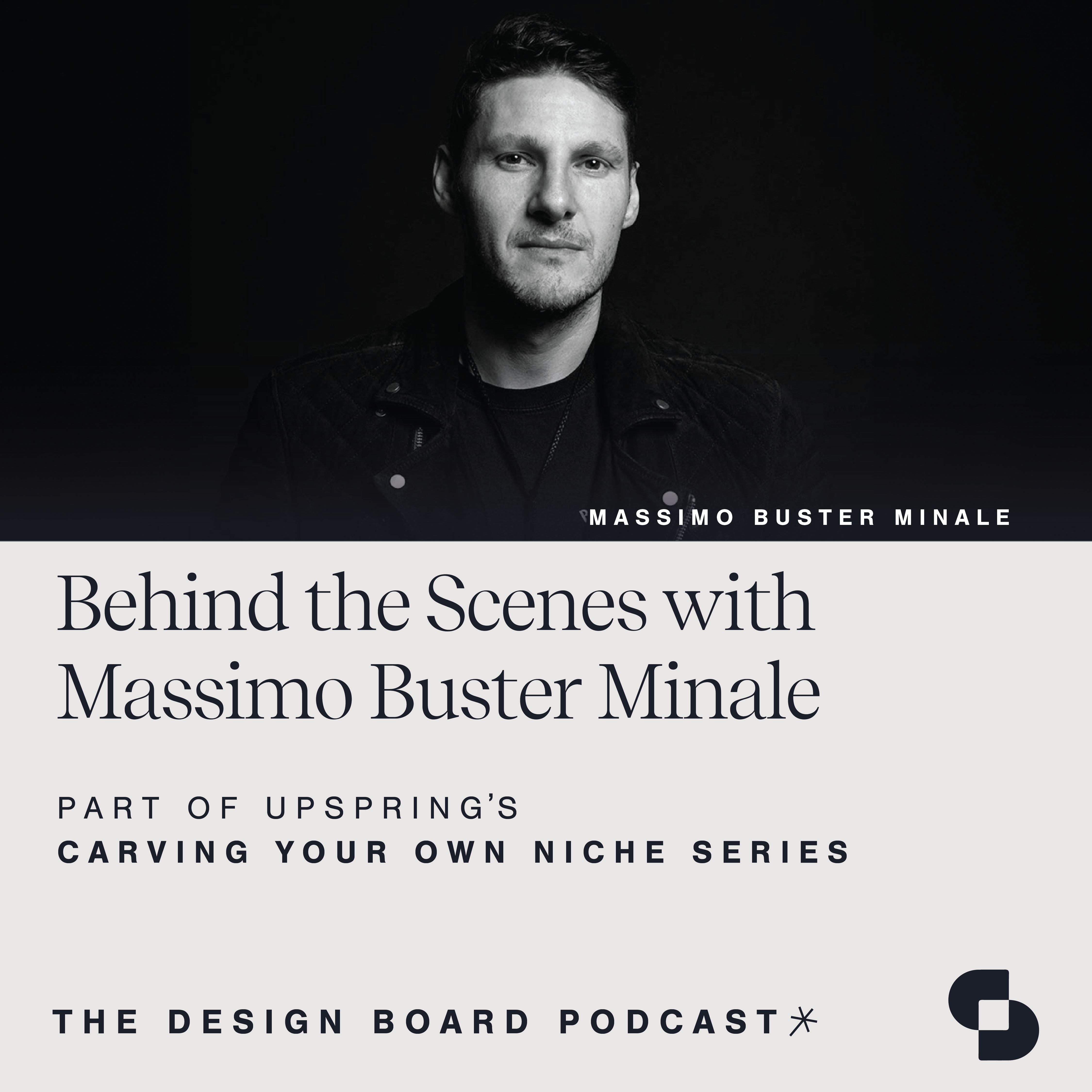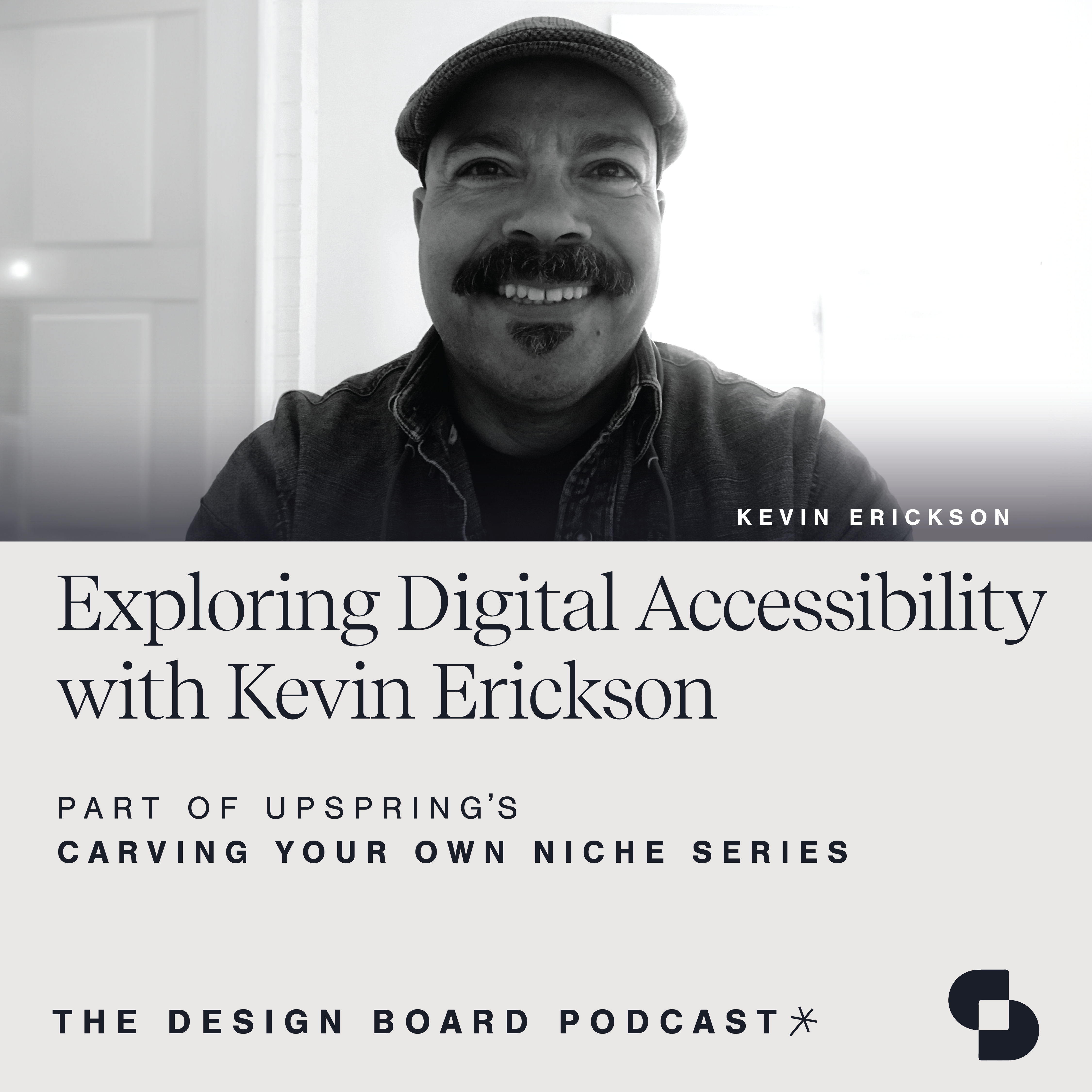Join us for a journey into the world of interior design with the dynamic duo of Susan Hayward and Jillian Hayward Schaible from Susan Hayward Interiors. In this episode, Susan and Jillian share the unconventional paths they both took to become designers and how their diverse backgrounds contribute to a unique perspective that sets them apart.
The Design Board, by UpSpring, is a proud member of SANDOW Design Group’s SURROUND Podcast Network, home to the architecture and design industry’s premier shows.
This transcript was exported on Feb 27, 2024 – view latest version here.
Tiffany Rafii:
Welcome to the Design Board, a podcast created by the team at UpSpring that focuses on design, development, and everything in between. We invite innovators in our industry and explore topics that support your growth in every way. The Design Board is a proud member of SURROUND a podcast network from SANDOW Design Group featuring the architecture and design industry’s premier shows. Check it out at SurroundPodcasts.com. Welcome everyone to the Design board, a podcast by UpSpring that focuses on design, development, and everything in between. I’m Tiffany Raffi, and today I’m joined by Susan Hayward and her daughter Jillian. In this episode, Susan and Jillian will share the unconventional paths they both took to become designers and how their diverse backgrounds contribute to a unique perspective that sets them apart. But let’s start with some introductions. Susan is an award-winning interior designer and founder of Susan Hayward Interiors. She thinks of interior design as a giant puzzle where all the pieces need to fit together to form the perfect space. Whether designing for commercial or residential, her process is all about great communication, working together, and creating something beautiful. Jillian is a partner of Susan Hayward Interiors and passionate about working with clients to help them visualize and achieve the spaces they envision with both beauty and practicality. With her unique perspective as a military spouse, she understands how important it is to truly make a home feel like home. All right. We are so excited to have Susan and Jill here to chat with us, so thank you for being here.
Susan Hayward:
Thank you.
Jillian Hayward Schaible:
Yeah. Thank you so much for having us.
Tiffany Rafii:
Let’s hop right in. I think it always helps to start at the beginning, so we would love it if you two would give us a history of how Susan Hayward Interiors started and sort of what that journey has been like.
Susan Hayward:
Sure. I’ll start that one. Since I kind of started this before Jill joined probably about 22 years ago. My husband and I had started a photography business and that was pretty much up and running and I decided that there was a little bit more that I wanted to do and went back to school and got a degree in interior design and decided that I would kind of concentrate all of my efforts that way, and that’s sort of how Susan Hayward started. So it started from a marketing and PR background, went to being sort of a solopreneur with my husband and then decided my real passion is something a little bit more creative in design, so moved on into that. And going back to school, being a little bit older was a whole different realm of possibilities.
You’ve already networked so much, you already have this whole group of people that know you. You have business connections, so it’s so much easier to start a business at that point. So I really felt like that was very beneficial at the time to be able to just hit the ground running. And that worked well for quite a number of years until I kind of felt at the point where just being the only designer was just too much. I had support staff with our photography business, but really needed more design assistance, and that was the time when Jillian was on the west coast looking for a little bit more things to do. She was going to help me out a little bit, and from then it sort of transitioned into her deciding that she wanted to do design, so I’ll let her kind of fill in those blanks.
Jillian Hayward Schaible:
I started helping Susan with a lot of the technology stuff that she needed help with like website and Facebook. At that time, she was also doing a little bit of blogging, so I was kind of helping on that aspect, sort of the behind the scenes, and then I started kind of gently moving into helping with orders and vendors, and then that kind of progressed a little bit into putting, sure, I’ll just put a mood board together. You send me what you need and I’ll just make it pretty for your clients. And we just started working more and more together, and then I realized I just loved this. And at the time, my husband was military at the time, so we were moving all the time, and I was looking for a new career that I could take with me from location to location, and it just seemed like a really natural path for me. So I ended up going back to get my design certificate and I came on board with Susan and we decided to do it together.
Tiffany Rafii:
That’s incredible. I love it. So how has that journey been since you’ve joined forces and joined, Susan? What has that experience been like and what efforts have you put in to sort of grow and scale the business?
Susan Hayward:
Sort of snicker a little bit for that one because it’s the question that everyone always asks and it’s always like, okay guys, but do you really get along? Like is it a smooth working relationship? How does that really work? And coming from a family business already with my husband and knowing what the good, the bad, and the ugly of that is, then doing something with my daughter, they’re so different. You know, working with a spouse is difficult. You’re together all the time and then at the end of the day, you’re back home again together as well. Whereas when Jillian and I work together, we’re in business during the day for our workday, and then the rest of the time I know what the rest of her day is. I know that she has children and she has what her schedule is like and what she’s doing. So it’s easy to shut things off at that point. And I also think that we have a great deal of respect for each other. So right off the bat, I think that that really, really helps. We’re very, very similar in the way that we approach things.
We’re very similar in that between the two of us, I don’t think there’s a full ego here. We’re really very much interested in hearing what the other person always has to say, and also very much there’s never anyone that was your fault. I don’t think we’ve ever said that to each other. If a problem happens, it happens. If something slipped through the cracks or slipped through the cracks, there’s never ever been that type of animosity or problems have come up. If anything, we play off of each other really, really well. I tend to be a little bit more traditional. Jillian’s a little bit more non-traditional.
I tend to think about things in a more, I don’t know, creative way. And she’s very scientific in her thoughts because that’s her background. So she’s been very black and white perspective of certain things. So in the end, it’s nothing but positive experiences for our clients because they’re getting the best of both worlds where they’re getting a whole different aesthetic that’s going to turn out because you’re not just getting someone that has one particular design aesthetic that they tend to go towards. It really opens up just two totally different realms of possibilities.
Tiffany Rafii:
No. That completely makes sense. I mean, Sarah and I, although not mother and daughter, are childhood friends, and I do think that those business partnerships that have a little something more, right, whether it’s in the family or their longtime relationships that started outside of the business have this layer of comfort and transparency and honesty that lends itself to more creativity and better output. So as long as the mutual respect is there, I couldn’t agree more that I think it actually levels you up in a lot of ways.
Jillian Hayward Schaible:
Definitely.
Tiffany Rafii:
So I’d love for you two to look back a little bit. What would you change or tell your past selves about starting a business from where you’re sitting now?
Jillian Hayward Schaible:
I think I would have started a little bit earlier. When I went back to get my design certificate I was just not in a place where I was able to go through another undergrad program. My background is actually in marine biology, so that’s what my degree is in. I would’ve loved to go through a typical four year schooling experience for interior design just looking back. That would’ve been amazing, but I think I just would’ve started a little bit earlier and asked more questions earlier, tried to get in. With interior design, I feel like you can read the books, learn how to do the floor plans. You can have great style, and there’s just no substitute for being there on the job with the contractors, with the clients, and hearing the questions that are being asked because no two projects are the same. So there’s always going to be these out of the box questions or creative ideas and problems that need to be solved, and you’ll never have those same questions on two jobs. So I think I would’ve just tried to dive in a little bit sooner in my case.
Tiffany Rafii:
Susan, how about you?
Susan Hayward:
I think I would, just would’ve been a little bit kinder to myself. I think going from one thing to another, I never felt like I was good enough, never felt like I was going to be able to make it, and that I was going to get the types of clients. Like why would they come to me when they can go to X, Y, Z amazing designer? I think it’s maybe having more confidence in my own abilities and the fact that, yeah, I did know what I was doing, and yes, I do have a good background in business, and this wasn’t my first rodeo. You know? This isn’t the first business I started. So to maybe just be a little kinder to myself in the early days.
Tiffany Rafii:
That definitely resonates with me. But, you know, I think both of you having backgrounds and things other than what you’re actually practicing is actually very advantageous. Of course, Jillian, if you had the opportunity to do that full interior design degree, wouldn’t have held you back. Right? It would’ve been lovely, but having perspective outside of what you’re doing, even when we’re hiring or looking at potential employees or even my kids in their own schooling, my kid is not going to be a professional basketball player, I’ll tell you that. But the skills he’s learning, right, on X, Y, Z team, and X, Y, Z basketball clinic, and the teamwork, and the skill building in various disciplines that lend themselves to business operations, to be perfectly honest, are really, really, really, really big and important.
I think people really underestimate the value. I almost say major in something different because it’s what gives you that edge and does make you, Susan, sort of the one to go to and sort of understanding photography and having run a business previously is incredibly helpful. Right? When you were sort of starting this, you probably made a lot of fewer mistakes than you would’ve otherwise coming out of the gate. So yes, to be kinder to yourself, but also the path lends itself to the success that you have. So I think not to laugh at or brush off.
Susan Hayward:
Sure. And also to tell anyone that is looking for a career change, that you’re never too old to start something new. Don’t ever let the fear that you can’t do it hold you back because you’re never going to be happy where you currently are. Try it. What’s the worst that can happen? You know, you always have your previous experience with something that you can always kind of go back to if it doesn’t work out, but you’ll never really be happy unless you go for it. Know that at least you tried.
Tiffany Rafii:
Absolutely. Talk to me a little bit about the challenges and benefits that come along with working with your mom, your daughter. Let’s dive into that a little bit deeper.
Jillian Hayward Schaible:
I think it’s all benefits. I haven’t experienced any challenges, I don’t think. Hopefully you haven’t.
Susan Hayward:
No. Not a single [inaudible 00:11:03] It’s just like the dream. What mom wouldn’t want to work with their daughter every day? I mean, come on, that’s the best.
Jillian Hayward Schaible:
I think it’s amazing. As Susan said, we are so similar in so many ways personally and professionally that I also think not only is it our personal relationship that helps our professional relationship, it’s that we look at, I think, our job not just as our work, but as a part of our whole lives together separately and she and I together. So if we have some big meeting on one day and she just knows that my kids are both sick and things are crazy in the morning, it’s not like I’m going to have to call my boss and try to explain things. She gets it.
She feels the same feelings, and it’s just we are able to help each other in such a different way because we really understand each other’s lives so much better. So I think that just looking at your work life from a part of your whole, right, your everyday whole is just… I think once COVID started, we all started looking at work-life balance and things, trying to work from home better and having a better balance. But I feel like we’ve had that the whole time. So I think that it’s just been so beneficial for that reason.
Tiffany Rafii:
Yeah. Who better than grandma to help in those situations? I totally hear you. I call my mom to run over when my kids are sick, but different dynamic. So I’d love to learn a little bit more and have our listeners draw inspiration from you two on where do you source your inspiration from? How are you inspired? How is your design aesthetic evolving? Chat through that a bit.
Susan Hayward:
Sure. I think it has evolved a lot. Being in New England, I wish there was more that we could do. New England tends to be very traditional and there tends to already be an aesthetic here, so that does make things a little bit more difficult. Doing coastal project gives us a little bit more fun, a little more things that we can put into that, so that certainly helps. Commercial projects, that’s where you really get a chance to go full on creative. So I think it’s just sort of we pull on things that we see every day. You know, like if I happen to just be outside and seeing something outdoors that I love, whether it be a texture or a color or just an overall feel, or if I go into a space and there’s something about that space that just draws me in, it’s like, what is it? Is it color? Is it texture? Is it a feel of something? And we kind of tend to bring a lot of that back into what we do.
I think it’s more that than going to find out what’s the latest trends and the trade shows that show us what is currently in style. We say to clients all the time that trends are great, but this is your home and you have to live in here, and if yellow is the color of the year and you hate yellow, we’re not putting yellow in your house. You know? It’s really important that they know that their space should be their space and we can take what they love and we can make it be current, but that doesn’t necessarily have to make it trendy. We can try to bring in as many of those current things as we can, but in the end, form follows function. So we want to make sure that everything we do is not just beautiful, but it’s functional. And we always say that we want our clients to love their space more six months after we leave than the day we leave because that really tells us that we nailed it.
Tiffany Rafii:
Talk to me about how the two of you interact with the design industry overall. What excites you about the industry? How do you participate? And where do you continue to draw inspiration from? I know you mentioned trade shows, but…
Jillian Hayward Schaible:
We go to a lot of the trade shows. We go to High Point. We hope to go twice a year, but we go at least once a year just to kind of see what’s new, what new vendors are coming up with, materials, and shapes, and just overall trends. But it also just opens our mind to a lot of new vendors. We always meet new vendors when we’re there because, you know, let’s face it, today’s world, everything is e-commerce, and we’re finding everything online and sourcing everything online, but there’s just no replacement for going and touching and feeling new products.
So we always come back with so many new ideas and tons of inspiration from trade shows. I will say that we’re also very excited about a new push for sustainability in the design world. A lot of vendors are really being asked to share their sustainability practices, where they’re sourcing materials from, if they’re sustainable, what they’re made out of, and I think that that is kind of forcing a lot of brands and vendors to be more transparent and be more mindful in their sourcing. That is really exciting to me. I hope that we can fast track that for all of our vendors.
Tiffany Rafii:
So we know that you really value relationships with your clients. Can you tell us a little bit more about how you build trust and how this has made a difference in your work?
Susan Hayward:
Sure. I think that it starts with the very first meeting when you walk in the door and you meet your client for the first time. It’s all built around listening, and so often you go into a space and we immediately know how we completely love to transform a space, but let’s face it, the reality may be that that’s not any idea of what they want. So we really have to make our expectations come off of their expectations. So we spend a lot of time listening. We make sure from the very first meeting that they understand that we’re not going to be happy with anything other than loving what we’re doing. We don’t want them to just like it. We want them to love it, and we must say that to them a hundred times, and we’re very, very patient. I know a lot of times designers really just want to push the project through and want to hire and get the stuff ordered and, oh my God, we’ve been doing this for so long.
We’re sort of the opposite. We’re like, this is on your schedule. We want you to feel so comfortable before you place this order that there’s not going to be a question. We feel like doing all that on the front end saves everything in the back end because if you rush them into something and you keep on saying, go with me, you’re going to love it, you’re going to love it. And they have all of these things that they’re trying to voice to you about why maybe not, and you’re not listening, I guarantee you when that piece comes in, you’re going to be returning it or you’re going to have some sort of discussion or argument about why that piece should or shouldn’t be there. So I think that builds trust and that every time you push for something that you really want, but you give them the opportunity to finally make the decision, when that piece does come in and it does just blow the space right up and they’re in love with it, then the trust builds a little bit more.
So then the next time you can push just a little bit harder and say, okay, well maybe this is what we want to do. That’s one half of it. The other half is to understand that they are people with lives, just like we are. They may be in a bad mood one day. They may have stuff going on with their families and their kids and whatever. So we really try to take all that into consideration and just be kind to people and know that not everything’s going to happen on our schedule. We try to foster the relationship with when we haven’t been at a client’s place for a while, for whatever reason, we just may send a hello note.
We make sure to remember everyone on holidays and send something just to let them know that we’re still here and we’re thinking of them. If we hear that any of their children have had an accomplishment or are sick or whatever, we’ll send a little note. So we really try to be part of their lives. We did a podcast a week or so ago, and one thing that the podcast person said to us was, I want to be the person that if they see me at a grocery store, come over and gives me a big hug and doesn’t just say, oh, hi, how are you doing? So I think it’s that same sort of feeling that’s what we’re looking to build with our clients, and as a result, we say, we have our clients for life, like they never leave. So we know as soon as we to finish one project, then we know them because we’re doing their neighbor down the street or we’re doing a house a second home that they have somewhere or their office. So it’s all about building relationships rather than just designing rooms.
Tiffany Rafii:
How do you work with your clients to help them, one, know what they like? I feel like a lot of times not everyone is so decisive or really fully understands what they even want or like, you know, I’d assume there’s some sort of process and way that they need to be sort of led to even just not what you want for them, but what do they even want? Right? I’d love it if you’d explore that a little bit because I feel like that’s super challenging. There are those people out there who look at a floor plan and can visualize exactly the different configurations and the way something could happen, and then others who see a floor plan and don’t even understand the space. Right? So I’m sure you’re meeting with all and working with all, and how do you help them develop their own vision?
Jillian Hayward Schaible:
So we actually start helping them show us what they like. And, you’re right, a lot of times they have no idea. So what we tell them is go on Pinterest or Houzz or open up some magazines and send us every picture that you like, and you don’t even have to tell us why you like it. So at the end, we’ll come up with almost like an album or a gallery collection of a whole bunch of different pictures, and they could be of different rooms. They could be of maybe just different types of furniture. And it’s funny because when you look at that collection overall, you’ll see similarities that they never would’ve seen. And we’ll point things out and say, okay, it looks like you like a warm palette or you like a cool palette. These types of colors seem to be the colors you’re drawn to.
They actually sort of teach themselves what they like just in doing that process. And that’s what we use as our starting board. So we do everything from traditional design to very modern. We can do beachy. We can do everything. It depends on our client. So we really need to know what their style is and what they’re going to love, and that’s our starting point. So until we see what they like and get a good feel for just the feeling they want in their home, we’re not going to get anywhere. So that’s where we always start. We’ll ask them lots of questions about how they like to use the space. As Susan said, our job is such an intimate job that we have with them. We’re in their home. We’re learning how do you sleep at night? What types of materials do you like on your body?
Sometimes we’ll even look at the clothes that they’re wearing. What types of clothes do you feel comfortable in? Do you like more neutrals? Do you like patterns or prints? Do you like silk fabrics or really fuzzy ones? So a lot of those things we can kind of bring into the home. So that’s where we typically start in terms of helping people come up with their style and what they’re looking for. A lot of times people won’t know the words to use for things that they like, but if we can capture an overall feeling of maybe a photo that they’ve seen and explain to them how you might be able to make that happen in their space, that’s kind of how we get the ball rolling.
Tiffany Rafii:
I love it. I really love that. I think I sort of do the same thing as images come across and you don’t always know why you like what you like, but you just sort of do. And I think that’s a great exercise because then along the way, if they’re deviating from that, you’re able to sort of pull it back as well. So no, I find that super interesting. Thank you for sharing. I’d love to hear a little bit about how you decide what types of projects to take on. What criteria do you sort of run through to pick and choose?
Susan Hayward:
A lot of it is going with your gut, and it’s a people thing. It’s not always a project thing. Is this someone that we really want to work with? And then we kind of go from there. You never know where that one person is going to take you. And that one project may be so tiny, but there might be another huge project behind there. And this is what we have found. We’ve had both things happen where we have taken on a project because we just clicked so well with the person, and it may be much smaller than we initially would take, but we just had such a good vibe and that turns into the dream client that has all of these other projects that they never really told you about until after they had a chance to get to know you.
And we’ve had the opposite happen where we may not have gone with the best part of our gut and what our gut’s saying when we get off that first Zoom call with a client because the project is so big and it’s so amazing, but it’s so terrible after we’ve [inaudible 00:23:43] with that initial, that really draws, I don’t know, Jill, if you agree, the types of projects that we take or we don’t take. We always say that nothing is too small and nothing is too big. You never know what’s going to lead to something bigger. As I said, some of our smaller clients have led to some of our biggest commercial projects and just overall maybe referred us to someone else. You know, you may only do a really small project with this person, but if you did it so well and got along so well with them, that person that they talk to next could be the best job you ever had. So I think that’s more we choose our clients versus choosing our jobs.
Tiffany Rafii:
Makes sense. It’s a very personal process, so it really does make sense that that would be the catalyst for decision making. I’d love it if the two of you would just sort of walk us through on whatever you can share, what’s in store for the year ahead, and what we can keep an eye on and anticipate to see from Susan Hayward Interiors.
Susan Hayward:
Well, this is going to be a really big year for us. We’ve decided to take Susan Hayward Interiors into a different direction, and we really felt after we’ve been working together now for quite a number of years, there’s more to Susan Hayward Interiors than Susan Hayward. So we wanted to make sure that this was as much of a partnership to the general public as it is within our own business, so we’re changing our name to Hayward Design House. That is a better reflection of who we are and the partnership that we have and the fact that it is a partnership and we are a collaboration and we want to go forward in that direction. So that’s super, super exciting for us.
Tiffany Rafii:
How exciting. Well, we can’t wait to see that unveiling.
Jillian Hayward Schaible:
We’re very excited.
Susan Hayward:
And we’re also doing our first show house this year, and that will be done in Redding, Connecticut at the aspire Show House. So that will happen in the fall of this year. So we’re very excited about that. We love both residential and commercial projects. So we do have a couple of really, really exciting projects. Another restaurant, we love doing restaurants. We have another restaurant that we’re starting. So we finished one last year that we are so proud of and just came out so beautifully, and we hope that the same thing will happen again this year. So that, and then taking our residential design business, I think, into a different level is something that we’re really looking forward to this year. We’re really looking to work more with architects and things from the ground up, so doing more projects where we have more control over the design process by starting earlier.
What we found is in some regards, it sort of has become our niche around here, is that we tend to be the designers that we get called in when there’s a problem. We’ll either have a contractor call us or there’s a standstill project or something’s not going well, and we need to bring in someone that’s going to move things along. So that’s great and that’s wonderful, and it’s great to be able to move in that direction, but it would be so nice to have more projects starting from the ground up where we can make all of those decisions at the beginning so that there’s never any problem as things move along and have to change.
Tiffany Rafii:
So exciting. Well, we can’t wait to see what’s in store for you too, and we will be watching closely. Thank you so much for taking the time to chat with me today. I know that our listeners are going to be inspired and invested in your continued growth, inspired by it, and invested in your continued growth. So again, thank you so much for being here.
Jillian Hayward Schaible:
Yeah. Thank you so much for having us.
Susan Hayward:
Thanks so much.
Tiffany Rafii:
Thank you so much for listening in with us today. We hope you leave inspired by the ideas in today’s episode. For more follow UpSpring on LinkedIn and Instagram. And don’t forget to check out the amazing lineup of shows brought to you by the SURROUND podcast network at SurroundPodcasts.com.

